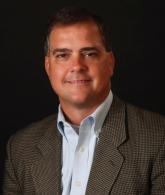5 stages of highly effective LTC facility tours
Having conducted and participated in hundreds of facility tours during my career, I have been able to distill the tour process into its most important stages. These stages comprise the welcome, discovery, tour, presenting financials/commitment and exit. Before we go into detail about these stages it might be helpful for you to understand what a tour is and what it is not.
Tours are an opportunity:
- for caregivers and elderly consumers to see your facility/community in action;
- for caregivers and elderly consumers to speak directly with the people who will be caring for the loved one;
- for you to build trust with caregivers and elderly consumers;
- for you to communicate physical plant and environmental competitive advantages.
Tours are not:
- an opportunity for your facility to sell itself (because it can’t);
- an opportunity to communicate positive outcomes and negative consequences avoided (that is your job);
- the place to communicate unseen competitive advantages, especially those associated with quality care, resident satisfaction, staffing strengths and clinical or care programs and services.
So let’s go into detail about the stages of the tour and what you should do in each stage.
1. WELCOME
Typically, you will meet a prospective resident/caregiver in the lobby, whether the tour is pre-scheduled or a walk-in. The welcome is your opportunity to set the expectation for the family about what will happen during the tour. This enables you to control the flow of the tour so you accomplish your goals and objectives. Here is suggested dialogue:
“Thank you for visiting Cypress Cove Healthcare Center. My name is Luke Fannon and my job is to help you today. The best way for me to do that is to first spend some time with you understanding what your situation is and your needs are. Then we will take a tour and show you specifically how we can help your family. After the tour we’ll come back to my office and discuss financial information. Are you ok with that?”
2. DISCOVERY
It is vitally important that you first understand the needs of the prospective resident and their caregivers before taking them on a tour of the facility or community. Why? Because the tour should be customized to speak directly to the unique needs of each prospect. Also, by asking questions and listening you have an opportunity to build trust with your prospect. Finally, caregivers need the opportunity to “vent” about their situation and you offer them this vital
counseling like experience by asking questions first. Here are some basic questions to pose:
- “Can you tell me about your situation?”
- “How is your caregiving responsibility impacting you and your family?”
- “When did you first start dealing with your loved one’s challenges?’
- “If nothing changes what will your life be like six months from now?”
- “Who else is involved with this decision?”
Once you have had this conversation with the family, repeat back what you have learned about their needs. This builds trust with the family by demonstrating that you listened.
3. TOUR
Conduct the tour by describing how your product or service can meet the stated needs of the prospective resident and their caregivers. There is simple formula for this communication:
- Repeat the need of the prospect: "You mentioned that your mom has a history of falls."
- Describe the features of your facility: "Our physical therapists will work with your mom, increasing her strength, range of motion and balance."
- Describe the benefits: "Mom will reduce her risks for falls and be safer. She will also have confidence to participate in activities and enjoy herself, improving her quality of life."
4. PRESENT FINANCIALS/CLOSE
Present the private pay costs of your product (if it’s a private pay product) or discuss Medicare/Medicaid/Supplemental Insurance and co-pays. Once you have presented financial information it is time to gain commitment from the family and the best way to do that is to ask this simple question: "What is the next best step for you and your family to take as you are making this decision?”
5. EXIT
Escort the family to the exit and thank them for coming.
The tour is an important process for converting referrals into admissions or move-ins. To maximize your effectiveness you must have a tour process which enables you to meet your objective, which is to motivate the family to choose your facility/community to meet their needs.

Luke Fannon is founder and CEO of Premier Coaching & Training, Unionville, Pa., which provides sales training, marketing team coaching and strategic consulting services to providers in the long-term care industry. For more information, visit www.pctmarketing.com.
Related Articles
Topics: Executive Leadership











